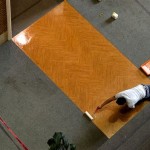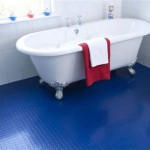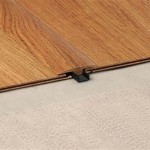Interior Flagstone Flooring: A Comprehensive Guide
Flagstone flooring, a natural stone option, offers a unique blend of durability, aesthetic appeal, and design versatility for interior spaces. Characterized by its irregular shapes, varying textures, and natural color variations, flagstone brings an organic and rustic feel to any room. This article explores the various aspects of interior flagstone flooring, covering its benefits, types, installation, maintenance, and design considerations.
Flagstone is a sedimentary rock formed from layers of compacted sediment over millions of years. This process results in a dense and durable material that is well-suited for flooring applications. Its natural clefting, or splitting along natural planes, produces the characteristic uneven surfaces that contribute to its distinctive appearance. The stone's composition often includes materials like sandstone, slate, or quartzite, each lending its own unique characteristics to the final product.
The selection of flagstone for interior use requires careful consideration of factors such as the type of stone, its thickness, color, texture, and the overall design scheme of the space. Understanding these elements is crucial for achieving a successful and long-lasting installation.
Benefits of Interior Flagstone Flooring
Flagstone flooring offers several advantages that contribute to its popularity among homeowners and designers alike. These benefits extend beyond its aesthetic qualities to encompass practical aspects such as durability, maintenance, and value.
First and foremost, flagstone is exceptionally durable. Its inherent density and composition make it resistant to wear and tear, making it suitable for high-traffic areas such as entryways, hallways, and kitchens. Properly installed and maintained flagstone flooring can withstand years of use without significant degradation. The inherent strength of the stone also makes it resistant to cracking and chipping, further enhancing its longevity.
Secondly, flagstone is relatively easy to maintain. Its natural surface is inherently stain-resistant, especially when properly sealed. Routine cleaning typically involves sweeping or vacuuming to remove loose debris, followed by occasional damp mopping with a mild detergent. Unlike some other flooring materials, flagstone does not require specialized cleaning products or techniques. Spot cleaning can effectively address spills or stains as needed. Regular sealing helps to further protect the stone and prevent the absorption of liquids.
Thirdly, flagstone offers a unique aesthetic appeal. Its natural variations in color, texture, and shape create a visually interesting and dynamic surface. The organic nature of the stone lends a sense of warmth and authenticity to the space. Flagstone flooring can complement a wide range of design styles, from rustic and traditional to contemporary and modern. Its versatility allows it to be used in various rooms throughout the house, creating a cohesive and harmonious aesthetic.
Finally, flagstone can increase the home's value. Its durability and aesthetic appeal are desirable qualities for prospective buyers. Properly installed flagstone flooring can be a long-term investment that enhances the overall value of the property. Its natural beauty and timeless appeal can set the home apart from others on the market.
Types of Flagstone Used in Interior Flooring
Various types of flagstone are available for interior flooring, each with its own unique characteristics and aesthetic qualities. The specific type of stone selected will depend on factors such as personal preference, budget, and the desired look and feel of the space.
Sandstone flagstone is a popular choice due to its warm, earthy tones and relatively smooth texture. It is typically available in shades of tan, brown, red, and beige. Sandstone is relatively porous and may require sealing to protect it from staining. Its softer nature also makes it slightly more susceptible to scratching than other types of flagstone.
Slate flagstone is characterized by its fine-grained texture and distinctive cleavage. It is typically available in shades of gray, black, green, and purple. Slate is known for its durability and resistance to staining. Its natural clefting creates a slightly uneven surface that adds to its rustic charm. Slate is also relatively easy to clean and maintain.
Quartzite flagstone is one of the hardest and most durable types of flagstone. It is known for its sparkling appearance, which is due to the presence of quartz crystals. Quartzite is typically available in shades of white, gray, and beige. Its resistance to scratching and staining makes it an excellent choice for high-traffic areas. Quartzite is also relatively low-maintenance.
Limestone flagstone offers a more uniform and sophisticated look. It is typically available in shades of beige, cream, and gray. Limestone is relatively porous and may require sealing to protect it from staining. Its smoother texture makes it comfortable to walk on. Limestone is also a good choice for radiant heating systems, as it conducts heat effectively.
The selection of flagstone type should also consider the thickness. Thicker flagstone is generally more durable and less prone to cracking, but it may also be more expensive and require more extensive subfloor preparation.
Installation and Maintenance of Flagstone Flooring
The proper installation and maintenance of flagstone flooring are crucial for ensuring its longevity and aesthetic appeal. A poorly installed flagstone floor can be prone to cracking, shifting, and other problems. Likewise, inadequate maintenance can lead to staining, discoloration, and other forms of damage.
Installation typically involves several steps, beginning with subfloor preparation. The subfloor must be clean, level, and structurally sound. Any imperfections or irregularities in the subfloor can lead to problems with the finished floor. A layer of mortar is then applied to the subfloor, followed by the flagstone. Each piece of flagstone is carefully placed and leveled to ensure a smooth and even surface. The joints between the flagstone pieces are then filled with grout. Grout selection is important; a grout that complements the flagstone color and texture should be chosen. After the grout has cured, the floor is cleaned and sealed.
Sealing is an essential step in the installation process. A sealant protects the flagstone from staining, moisture damage, and other forms of wear and tear. The type of sealant used will depend on the type of flagstone and the desired level of protection. Some sealants are designed to penetrate the stone and provide long-lasting protection. Others are designed to create a protective layer on the surface of the stone.
Maintenance of flagstone flooring is relatively straightforward. Regular sweeping or vacuuming is essential for removing loose debris. Damp mopping with a mild detergent can be used to clean the floor on a regular basis. Avoid using harsh chemicals or abrasive cleaners, as these can damage the stone. Spot cleaning can be used to address spills or stains as needed. Re-sealing the floor every one to two years can help to maintain its protection and appearance.
Specific considerations should be given to flagstone used in bathrooms or kitchens where moisture exposure is higher. In these areas, ensure proper ventilation to prevent water damage and mold growth. Regular inspection of grout lines is also vital to identify and address any potential issues early.
Addressing cracks or chips promptly is essential. Small cracks can be repaired with epoxy or grout, while larger chips might require professional repair. Ignoring these issues can lead to further damage and compromise the integrity of the flooring.
In conclusion, interior flagstone flooring offers a durable, aesthetically pleasing, and versatile flooring option. Careful consideration of the type of stone, proper installation techniques, and consistent maintenance practices are essential for maximizing its benefits and ensuring its longevity.

Interior Natural Flagstone Ideas Grand River Stone

Interior Flagstone Flooring To Give A Classic Feel Your Home

The Classic Charm Of Flagstone Flooring Grand Designs

Interior Natural Flagstone Ideas Grand River Stone

Indoor Flagstone Flooring Stone House

Stone Tiles Flagstone Floor Beswick

Should You Re Your Original Flagstone Flooring Indigenous

Tucson Sun Valley Flagstone Flooring

Interior Natural Flagstone Ideas Grand River Stone Flooring Farmhouse

Daltile Natural Stone Collection Mongolian Spring 12 In X 24 Slate Flagstone Floor And Wall Tile 13 5 Sq Ft Case S781pattnflag1p The Home Depot
Related Posts








